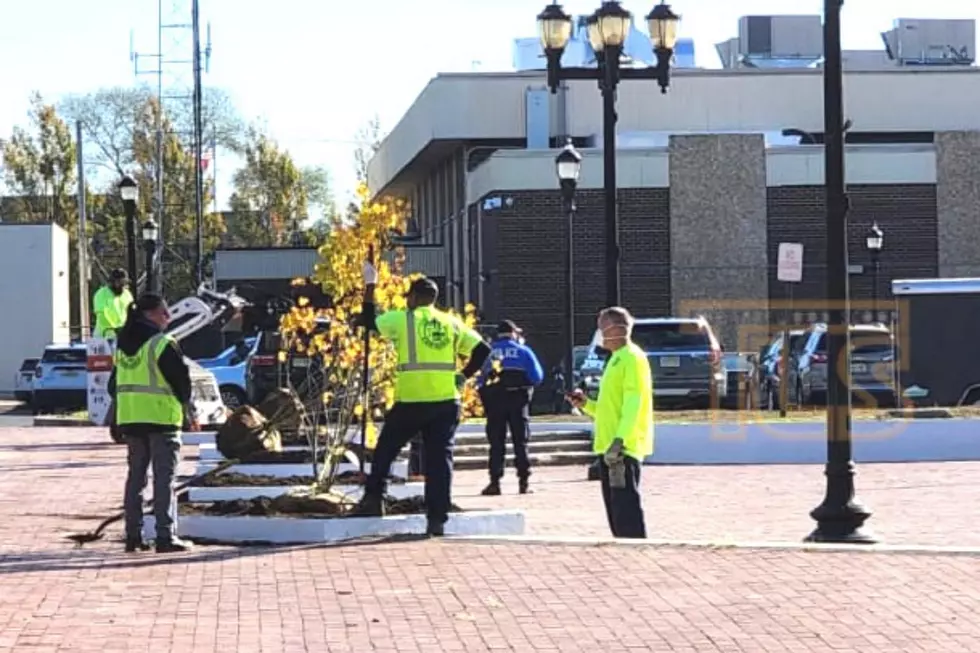
Lakewood, NJ replants trees chopped down to drive away homeless
LAKEWOOD — They're smaller than their predecessors, but new trees at Lakewood town square have finally been planted after the township removed them over the summer to deter the homeless.
New plantings were added to the plaza over the weekend, as first reported by The Lakewood Scoop. Mayor Ray Coles told New Jersey 101.5 that there are various new types of trees including several Colorado spruce and crepe myrtle that should grow larger with time.
Crews also repainted the walls surrounding the trees for a cleaner look. The touch-ups and new trees were part of a plan Coles outlined to New Jersey 101.5 in early September.
Lakewood chopped the old trees down on Aug. 8 amid an increase in complaints about the homeless, including reports that some were defecating between parked cars. Coles said at the time that some female employees who worked at the nearby municipal building did not feel safe going to their cars alone.
Nearly three months later, Coles says that the tree removals have made a long-term impact.
READ MORE: Lakewood, NJ felled its town square trees to drive away the homeless
"I received several calls from residents and businesses thanking us and saying the environment felt safer," the mayor said Monday. But when asked if he would recommend other townships take similar action, Coles said it was a "difficult call."
"My recommendation to other towns is to be proactive with plans to assist residents who fall on hard times and try to locate assistance for those in need of mental health or addiction issues."
The mayor said that at a meeting last week, he noted that the issue of homelessness will likely not go away.
"Most of the folks we are trying to help will not accept it," Coles said. "But, just because it may be impossible to fully solve the problem, we can't give up."
"What got lost in the sensationalism about the trees coming down, was the hard work that our partner STEPS have been doing for years, trying to assist our homeless residents and making sure they were safe when bad weather comes along."
Advocates decry cutting Lakewood's trees
However, critics of the plan say that removing the trees only moved the homeless problem to other parts of Lakewood. Minister Steve Brigham told New Jersey 101.5 that cutting down the trees, some of which were decades old, was a "crime against nature."
Brigham, head of Lakewood Outreach Ministry, said that among the nearly 30 trees removed were two "beautiful" holly trees and the 25-foot town square Christmas tree. He noted many of the concrete planters remain empty, others were filled with prickly bushes, and the replacement Christmas tree is half the size of the old one.
"It's still a very bad situation in Lakewood," Brigham said of homelessness. "They've been sleeping in the alleyways."
While the plaza once acted as a central hub for outreach, it's now harder for volunteers to find and help the homeless. Brigham said they've spread out to churches, the railroad tracks, and a "muster zone" pavilion, informally named for acting as a site where day laborers gather to earn a day's wage.
Adding to the problem is that there are no permanent homeless shelters in Ocean County. While there are temporary Code Blue shelters for the extreme cold, the lack of a significant number of permanent beds means the homeless are forced to sleep in public areas.
Rick Rickman is a reporter for New Jersey 101.5. You can reach him at richard.rickman@townsquaremedia.com
Click here to contact an editor about feedback or a correction for this story.




